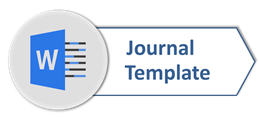Écriture Feminine in the Narration Level of Jeanette Winterson’s The Powerbook
Abstract
This writing examines the narration level in Jeanette Winterson’s novel The Powerbook (2000) by focusing on the concept of écriture feminine, referring to the structure and the form of narration. Jeanette Winterson is one of woman writers in English literature whose works indicate a form of écriture feminine as a counter discourse for phallogocentrism. Winterson’s works in the narration level exhibit the difference from the conventional narration forms. In The Powerbook, écriture feminine in the narration level is shown in the form of fragmented narration that comes in three different forms, namely: narcissistic narrative, public narration and demythologizing history. The result of the research points out that the narration form of the novel is a resistance toward phallogocentrism by demonstrating women’s writing that manifests the way women make sense of their world.
Full Text:
PDFReferences
Cixous, H. (Autumn,1981). Castration or Decapitation. (A. Kuhn, Ed.) Signs, Vol. 7, No. 1, 41-55.
Cixous, H. (Summer, 1976). The Laugh of the Medusa. (K. Cohen, & P. Cohen, Eds.) Signs, Vol. 1, No. 4., 875-893.
Front, S. (2009). Transgressing Boundaries in Jeanette Winterson’s Fiction. Retrieved from https://www.peterlang.com/view/product/63799
Hutcheon, L. (1980). Narcissistic Narrative The Metafictional Paradox. Ontario: Wilfrid Laurier University Press.
Irigaray, L. (1985). This Sex which is not One. This Sex which is not One, 23-33.
Kellaway, K. (2000, Agustus 27). Jeanette Winterson's new novel, The PowerBook, is a virtuoso trip into virtual reality. Retrieved October 2016, from The Guardian.
Kilic, M. Ö. (2004, Desember). Demythologizing History: Jeanette Winterson's Fictions and His/Tories. Feminismo, 127-134.
Lanser, S. (1989). Towards Feminist Narratology. 453-469.
Méndez, F. C. (2010). The Limitless Self: Desire and Transgression in Jeanette Winterson's Oranges Are Not the Only Fruit and Written on the Body. Master Thesis, Universitat de Barcelona. Retrieved November 2016, from http://diposit.ub.edu/dspace/handle/2445/11225
Rossitsa Terzieva-Artemis. (2007). “Desiring,” or Simply Human: Jeanette Winterson's Written on the Body. Performing Identity/Crossing Borders: The Cyprus Symposium. Retrieved November 2016, from cicac.tru.ca/media/artemis_2007.pdf
Shihab, N. F. (2014). L'ecriture Feminine sebagai Wacana Tandingan dalam Tiga Novel Jeanette Winterson. Universitas Padjadjaran, English Departmenet. Jatinangor: Universitas Padjadjaran.
Showalter, E. (2000, September 2). Jeanette Winterson's The.Powerbook is lost in cyberspace. Retrieved October 2016, from The Guardian: https://www.theguardian.com/books/2000/sep/02/fiction.jeanettewinterson1
Winterson, J. (1985). Oranges are not the Only Fruit. Great Britain: Cox & Wyman Ltd, Reading.
Winterson, J. (1996). The Passion. Great Britain: Cox & Wyman, Reading, Berkshire.
Winterson, J. (1997). Gut Symmetries.
DOI: https://doi.org/10.33365/ts.v15i2.30
Refbacks
- There are currently no refbacks.
Copyright (c)
Teknosastik: Jurnal Bahasa dan Sastra
Publisher: Universitas Teknokrat Indonesia
Address: Zainal Abidin Pagaralam Street 9-11, Bandar Lampung, Indonesia
Website: https://ejurnal.teknokrat.ac.id/index.php/teknosastik/index

Creative Commons Attribution-ShareAlike 4.0 International License






